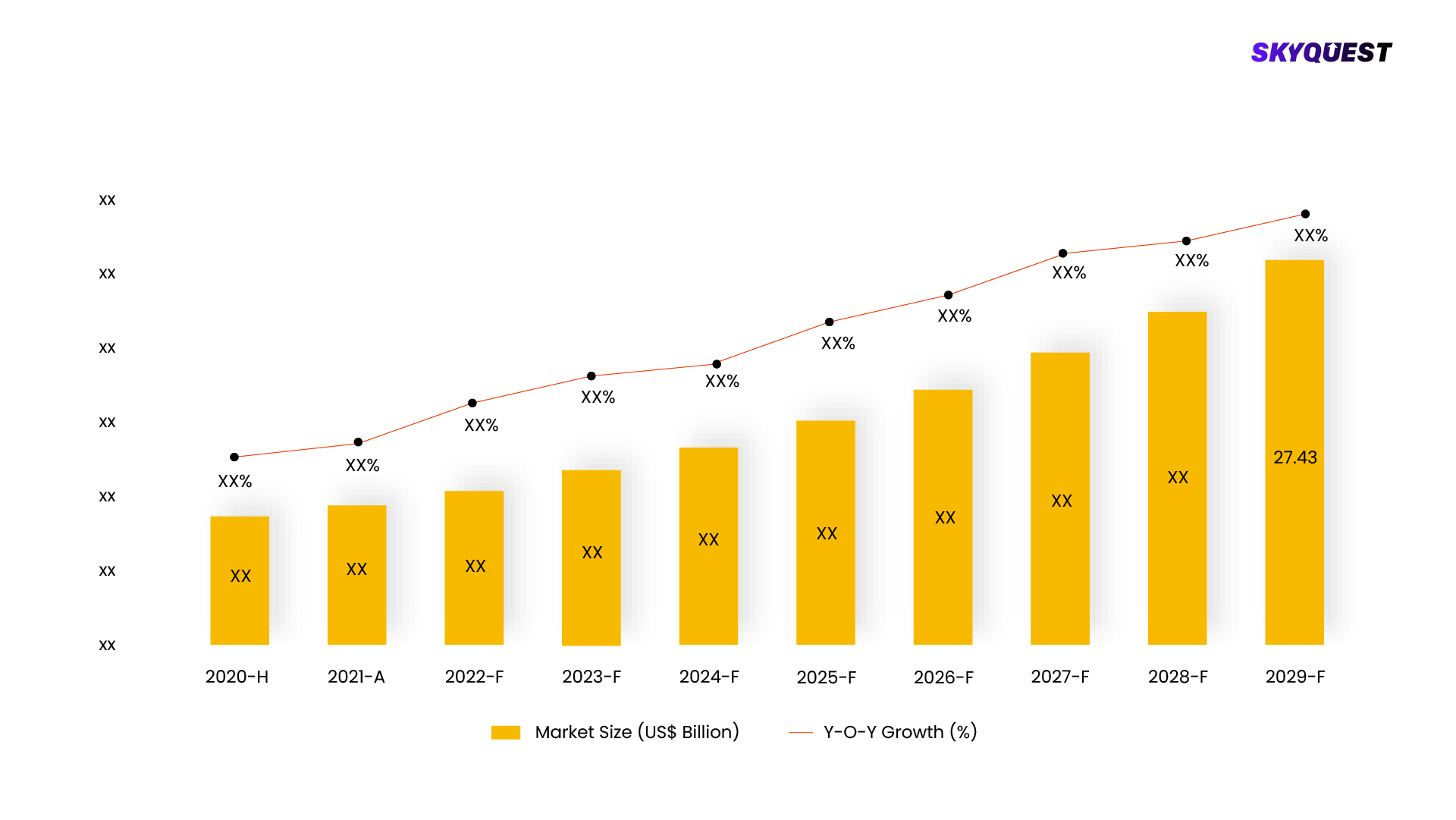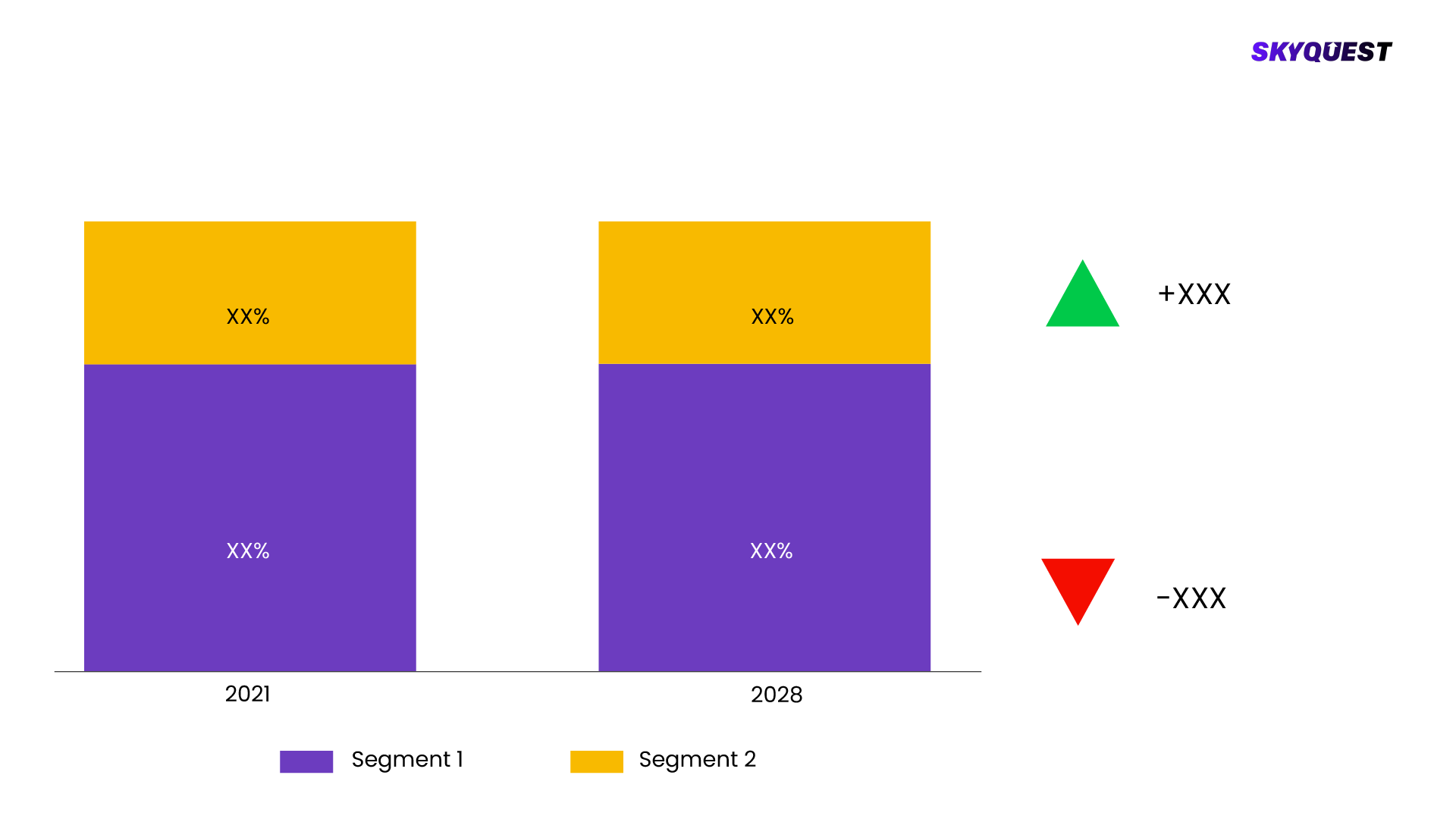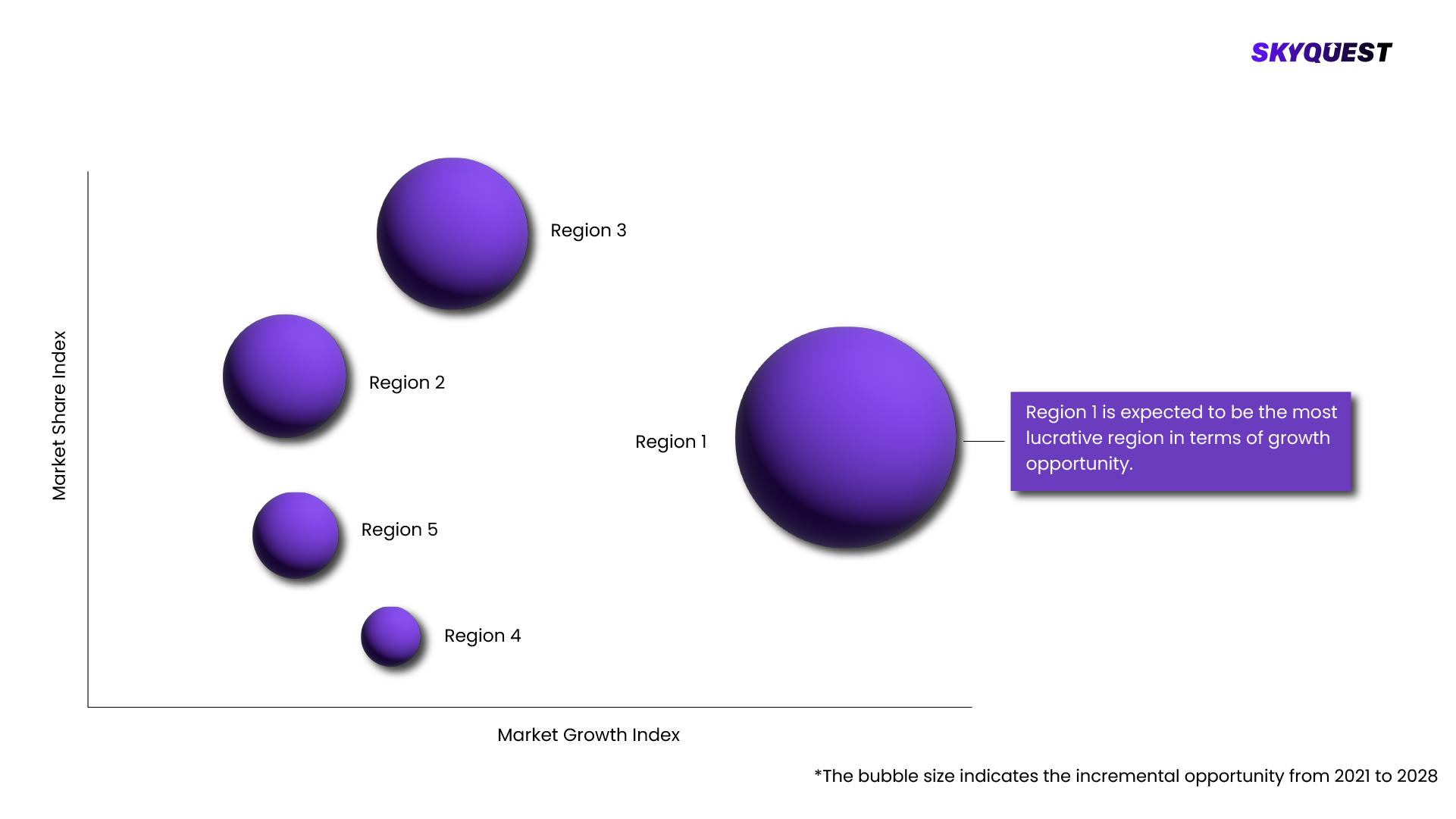
Product ID: UCMIG35A2827

Report ID:
UCMIG35A2827 |
Region:
Global |
Published Date: Upcoming |
Pages:
165
| Tables: 55 | Figures: 60
The global artificial urinary sphincters market holds a significant value, having been estimated at USD 386.9 million in 2018, and it is poised for substantial growth with a projected compound annual growth rate (CAGR) of 6.6% from 2019 to 2026. The market's growth is propelled by several factors, including the escalating prevalence of stress and urge urinary incontinence (UI) affecting both males and females. This condition has led to an increasing demand for effective treatment solutions, such as artificial urinary sphincters. Furthermore, the rising healthcare expenditure observed in developing countries is also contributing to the expansion of the market, as improved medical facilities and advanced treatment options become more accessible to patients in these regions. As a result, the artificial urinary sphincters market is expected to witness steady growth over the forecast period, catering to the healthcare needs of individuals experiencing urinary incontinence.

This report is being written to illustrate the market opportunity by region and by segments, indicating opportunity areas for the vendors to tap upon. To estimate the opportunity, it was very important to understand the current market scenario and the way it will grow in future.
Production and consumption patterns are being carefully compared to forecast the market. Other factors considered to forecast the market are the growth of the adjacent market, revenue growth of the key market vendors, scenario-based analysis, and market segment growth.
The market size was determined by estimating the market through a top-down and bottom-up approach, which was further validated with industry interviews. Considering the nature of the market we derived the Health Care Equipment by segment aggregation, the contribution of the Health Care Equipment in Health Care Equipment & Services and vendor share.
To determine the growth of the market factors such as drivers, trends, restraints, and opportunities were identified, and the impact of these factors was analyzed to determine the market growth. To understand the market growth in detail, we have analyzed the year-on-year growth of the market. Also, historic growth rates were compared to determine growth patterns.
The Artificial Urinary Sphincters Market is segmented by Brand (Revenue, USD Million, 2015 - 2026). We are analyzing the market of these segments to identify which segment is the largest now and in the future, which segment has the highest growth rate, and the segment which offers the opportunity in the future.

Artificial Urinary Sphincters Market is being analyzed by North America, Europe, Asia-Pacific (APAC), Latin America (LATAM), Middle East & Africa (MEA) regions. Key countries including the U.S., Canada, Germany, France, UK, Italy, Spain, China, India, Japan, Brazil, GCC Countries, and South Africa among others were analyzed considering various micro and macro trends.

SkyQuest's expert analysts have conducted a risk analysis to understand the impact of external extremities on Artificial Urinary Sphincters Market. We analyzed how geopolitical influence, natural disasters, climate change, legal scenario, economic impact, trade & economic policies, social & ethnic concerns, and demographic changes might affect Artificial Urinary Sphincters Market's supply chain, distribution, and total revenue growth.
To understand the competitive landscape, we are analyzing key Artificial Urinary Sphincters Market vendors in the market. To understand the competitive rivalry, we are comparing the revenue, expenses, resources, product portfolio, region coverage, market share, key initiatives, product launches, and any news related to the Artificial Urinary Sphincters Market.
To validate our hypothesis and validate our findings on the market ecosystem, we are also conducting a detailed porter's five forces analysis. Competitive Rivalry, Supplier Power, Buyer Power, Threat of Substitution, and Threat of New Entry each force is analyzed by various parameters governing those forces.
The Artificial Urinary Sphincters Market is being analyzed by SkyQuest's analysts with the help of 20+ scheduled Primary interviews from both the demand and supply sides. We have already invested more than 250 hours on this report and are still refining our date to provide authenticated data to your readers and clients. Exhaustive primary and secondary research is conducted to collect information on the market, peer market, and parent market.
Our cross-industry experts and revenue-impact consultants at SkyQuest enable our clients to convert market intelligence into actionable, quantifiable results through personalized engagement.
| Report Attribute | Details |
|---|---|
| The base year for estimation | 2021 |
| Historical data | 2016 – 2022 |
| Forecast period | 2022 – 2028 |
| Report coverage | Revenue forecast, volume forecast, company ranking, competitive landscape, growth factors, and trends, Pricing Analysis |
| Segments covered |
|
| Regional scope | North America, Europe, Asia-Pacific (APAC), Latin America (LATAM), Middle East & Africa (MEA) |
| Country scope | U.S., Canada, Germany, France, UK, Italy, Spain, China, India, Japan, Brazil, GCC Countries, South Africa |
| Key companies profiled |
|
| Customization scope | Free report customization (15% Free customization) with purchase. Addition or alteration to country, regional & segment scope. |
| Pricing and purchase options | Reap the benefits of customized purchase options to fit your specific research requirements. |
Executive Summary
Market overview
Parent Market Analysis
Market overview
Market size
KEY MARKET INSIGHTS
COVID IMPACT
MARKET DYNAMICS & OUTLOOK
Market Size by Region
KEY COMPANY PROFILES
For the Artificial Urinary Sphincters Market, our research methodology involved a mixture of primary and secondary data sources. Key steps involved in the research process are listed below:
1. Information Procurement: This stage involved the procurement of Market data or related information via primary and secondary sources. The various secondary sources used included various company websites, annual reports, trade databases, and paid databases such as Hoover's, Bloomberg Business, Factiva, and Avention. Our team did 45 primary interactions Globally which included several stakeholders such as manufacturers, customers, key opinion leaders, etc. Overall, information procurement was one of the most extensive stages in our research process.
2. Information Analysis: This step involved triangulation of data through bottom-up and top-down approaches to estimate and validate the total size and future estimate of the Artificial Urinary Sphincters Market.
3. Report Formulation: The final step entailed the placement of data points in appropriate Market spaces in an attempt to deduce viable conclusions.
4. Validation & Publishing: Validation is the most important step in the process. Validation & re-validation via an intricately designed process helped us finalize data points to be used for final calculations. The final Market estimates and forecasts were then aligned and sent to our panel of industry experts for validation of data. Once the validation was done the report was sent to our Quality Assurance team to ensure adherence to style guides, consistency & design.
Customization Options
With the given market data, our dedicated team of analysts can offer you the following customization options are available for the Artificial Urinary Sphincters Market:
Product Analysis: Product matrix, which offers a detailed comparison of the product portfolio of companies.
Regional Analysis: Further analysis of the Artificial Urinary Sphincters Market for additional countries.
Competitive Analysis: Detailed analysis and profiling of additional Market players & comparative analysis of competitive products.
Go to Market Strategy: Find the high-growth channels to invest your marketing efforts and increase your customer base.
Innovation Mapping: Identify racial solutions and innovation, connected to deep ecosystems of innovators, start-ups, academics, and strategic partners.
Category Intelligence: Customized intelligence that is relevant to their supply Markets will enable them to make smarter sourcing decisions and improve their category management.
Public Company Transcript Analysis: To improve the investment performance by generating new alpha and making better-informed decisions.
Social Media Listening: To analyze the conversations and trends happening not just around your brand, but around your industry as a whole, and use those insights to make better Marketing decisions.
Our industry expert will work with you to provide you with customized data in a short amount of time.
REQUEST FREE CUSTOMIZATIONThe global market for Artificial Urinary Sphincters was estimated to be valued at US$ XX Mn in 2021.
The global Artificial Urinary Sphincters Market is estimated to grow at a CAGR of XX% by 2028.
The global Artificial Urinary Sphincters Market is segmented on the basis of Brand (Revenue, USD Million, 2015 - 2026).
Based on region, the global Artificial Urinary Sphincters Market is segmented into North America, Europe, Asia Pacific, Middle East & Africa and Latin America.
The key players operating in the global Artificial Urinary Sphincters Market are rview , The global artificial urinary sphincters market size was valued at USD 386.9 million in 2018 and is expected to grow at a compound annual growth rate (CAGR) of6.6% from 2019 to 2026. Increasing prevalence of stress, urge urinary incontinence (UI) in males as well as females, and rising healthcare expenditure in developing countries are few factors driving the market for artificial urinary sphincters. , Artificial Urinary Sphincter (AUS) is a silicon rubber device that is surgically implanted to treat severe UI in males as well as females. Urinary incontinence is of three types such as stress incontinence, urge incontinence, and mixed incontinence. AUS works like a natural urinary sphincter that controls or restricts urine flow out of the bladder. , Increasing investments by the healthcare companies along with government funding is promoting the research activities, which in turn boosts the market for artificial urinary sphincters. According to India Brand Equity Foundation, pharma giants in India such as Sun Pharma has increased its R&D expenditure from 9.1% in 2015 to 23% in 2016. In addition, key market players such as Boston Scientific Corporation has increased their research and development expenditure from USD 997 million in 2017 to USD 1.1 billion in 2018. , According to the Organization for Economic Co-operation and Development (OECD), in 2018, the U.S. ranks highest in healthcare spending among the developed nations of the world. Thus, increasing investment in the research and development and rising health care expenditure in countries such as the U.S., Germany, and Switzerland are primarily driving the market for artificial urinary sphincters. , Bladder and Bowel Foundation, and Education and Resources for Improving Childhood Continence (ERIC) have together launched an awareness campaign named “Love your Gusset”, aimed to raise awareness about the stress UI in women. World Federation of Incontinence Patients (WFIP) started an annual initiative World Continence Week (WCW) with the approval of International Incontinence Society. WCW is the initiative started at the global level for spreading awareness about bladder weakness, urinary incontinence, and other conditions. Thus, increasing awareness initiatives by various organizations about urinary diseases and rising prevalence of UI are few more factors driving the market for artificial urinary sphincters. , Brand Insights , AMS 800 dominated the overall market for artificial urinary sphincters owing to its special characteristics such as it is considered best for the treatment of Stress Urinary Incontinence (SUI) in males. This device consists of three main components which include control pump, occlusive cuff, and a pressure-regulating balloon, which are filled with sterile solution and connected with a tubing. Furthermore, factors such as highly durable, effective, and safe surgical option for the treatment of SUI in males, and high satisfaction rate among men are also contributing to market growth. , On the basis of brands, the others segment is expected to exhibit highest CAGR during the forecast period. The others segment includes brands such as ZSI 375 and FlowSecure. Factors such as easy to implant, adjustable to the patient’s continence needs, and low risk of mechanical failure are attributing towards the increasing demand of the other artificial urinary sphincters over AMS 800 in the forecast period. , End-use Insights , Based on end-use segment, the male segment dominated the artificial urinary sphincters market owing to increasing number of male patients suffering from SUI. Mostly older males who are above 55 years of age are more to develop this disease. According to the Global Forum on Incontinence, 5% of men, around 121 million people around the globe are suffering from some type of urinary incontinence. Thus, increasing number of patients suffering with UI after getting their prostate surgery and other symptoms are majorly driving the market for artificial urinary sphincters. , The female segment is expected to witness the highest CAGR in the future owing to increasing awareness among female about the artificial urinary sphincters and increasing number of urges UI cases in women. UI is the major issue for abnormal health in women nowadays. There are several reasons such as pregnancy, childbirth, and menopause which are contributing towards growing UI in women. However, overactive bladder muscles and weak bladder muscles may also cause UI in women. UI is a common issue in the older population as compared to the younger population. Thus, increasing female geriatric population suffering from UI is primarily driving the demand for artificial urinary sphincters among women. , Regional Insights , North America dominated the market for artificial urinary sphincters owing to the increasing incidence of UI in this region, rising awareness program, and presence of well-established healthcare facilities in the region. Currently, almost 13 million Americans are incontinent out of which 85% of the population are women. In the U.S., prevalence of incontinence increases in women above the age of 50 years. More than 50% of geriatric American population suffers from stress and urge urinary incontinence. Thus, an increasing number of patient suffering from UI is primarily driving the market for artificial urinary sphincters. , Asia Pacific is expected to witness the highest CAGR in future due to the rising government healthcare spending, increasing government initiatives, and awareness campaigns by various organizations regarding urinary diseases. For instance, in India, World kidney Day is being celebrated on 14 March every year that aims to encourage and adopt healthy lifestyles so that kidney, as well as urinary diseases, can be prevented. Thus, these factors are expected to boost the growth of the market during the forecast period. , Key Companies & Market Share Insights , The key market players are focusing on the launch of innovative types of artificial urinary sphincters, growth strategies, and technological advancements. For instance, AMS 800 urinary control system of Boston Scientific is specially used for male SUI. According to Boston Scientific Corporation facts, about 150,000 patients have been treated with AMS 800 after getting caused by SUI. , KEY MARKET SEGMENTS , BY Brand (Revenue, USD Million, 2015 - 2026) , AMS 800 , Others , bY End-use (Revenue, USD Million, 2015 - 2026) , Male , Female , bY Regional (Revenue, USD Million, 2015 - 2026) , North America , The U.S. , Canada , Europe , Germany , The U.K. , France , Italy , Spain , Asia Pacific , Japan , China , India , Australia , South Korea , Latin America , Brazil , Mexico , Argentina , Colombia , Middle East and Africa (MEA) , South Africa , UAE , KEY PKAYERS , Boston Scientific Inc. , GT Urological , RBM-Med , ZEPHYR Surgical Implants , Albyn Medical, Ltd.".
Want to customize this report? This report can be personalized according to your needs. Our analysts and industry experts will work directly with you to understand your requirements and provide you with customized data in a short amount of time. We offer $1000 worth of FREE customization at the time of purchase.

Product ID: UCMIG35A2827